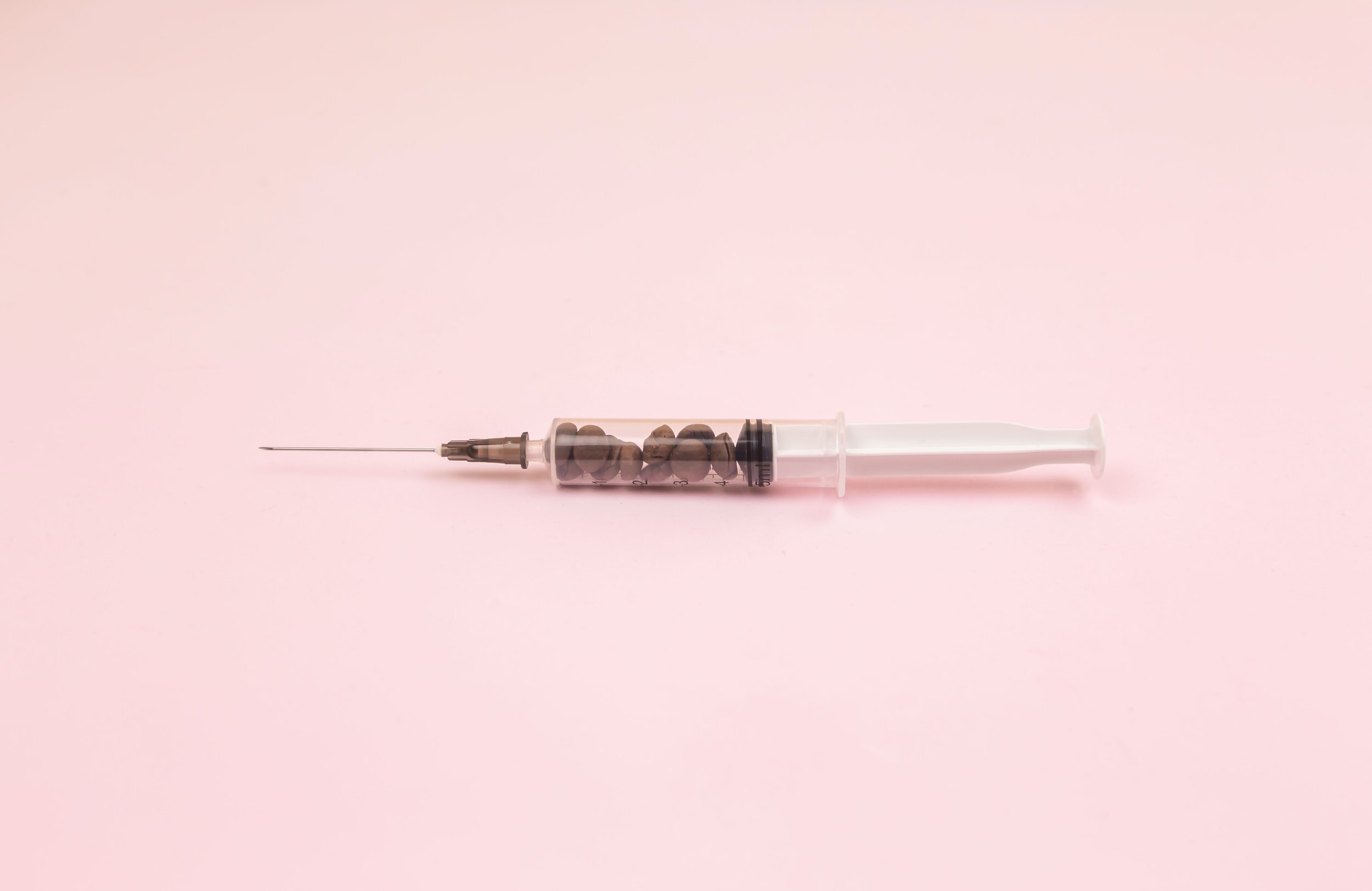The Top 5 Early Warning Signs of Type 2 Diabetes
I've been a diabetes educator for more than two decades. If I had a dollar for every patient who's ever said to me, "I didn't know I had diabetes. I thought I was just tired..." then I'd be a very rich woman. Sometimes the signs of diabetes are obvious, but sometimes they're subtle. In this article, we'll break down the top five warning signs of diabetes so you can be informed of what early diabetes might look like.
Type 2 diabetes is a chronic condition that affects one out of every ten Americans, and pre-diabetes currently affects approximately one-third of all adults living in the United States. From frequent urination and excessive thirst to unexplained weight loss and constant fatigue, we'll explore each warning sign in detail, providing you with the knowledge you need to take control of your health.
By understanding these signs, you can recognize potential symptoms in yourself or loved ones and seek medical attention quickly. Whether you have a family history of diabetes or simply want to stay proactive about your blood sugars, this article will equip you with the information necessary to spot the warning signs of type 2 diabetes and make informed decisions about your health.
Understanding the Risk Factors for Type 2 Diabetes
Before diving into the warning signs of type 2 diabetes, let's review the risk factors associated with this condition. Anyone can develop type 2 diabetes, but certain factors increase the likelihood of its occurrence. One of the primary risk factors is carrying extra weight. Excess weight puts added strain on the body's ability to use insulin, the hormone responsible for regulating blood sugar levels.
Other risk factors include a lack of exercise, a family history of diabetes (especially a parent or sibling), high blood pressure, and certain ethnic backgrounds such as African American, Hispanic, or Asian. By recognizing these risk factors, you can take proactive steps to manage and potentially prevent the development of type 2 diabetes.
It's worth noting that while these risk factors increase the likelihood of developing type 2 diabetes, they don't guarantee its occurrence. People with no risk factors still develop the condition, so knowing the warning signs and getting tested and treated for diabetes before any damage occurs is important. Now, let's dive into the top 5 warning signs of type 2 diabetes.
The Importance of Recognizing Warning Signs
Early detection of type 2 diabetes is crucial for effective management and prevention of complications. The longer a person lives with untreated blood sugars, the higher the risk of damage to the eyes, kidneys, heart, and nervous system. Even if the way you feel doesn't quite fit the all the signs and symptoms of diabetes, but you still feel "off," schedule a check up with your healthcare provider ASAP.
Warning Sign #1: Frequent Trips to the Restroom
One of the most common warning signs of type 2 diabetes is frequent urination, also known as polyuria. If you find yourself needing to urinate more often than usual, especially during the night, it may be a sign that your body is struggling to regulate blood sugar levels. High blood sugar levels can cause the kidneys to work harder to remove the excess sugar from your bloodstream, leading to increased urination. This symptom should not be ignored, as it can be an early indication of type 2 diabetes. If you notice a significant increase in your need to urinate, make an appointment with your healthcare provider.
In addition to frequent urination, you may also experience an increased feeling of thirst, known as polydipsia. Excessive urination can lead to dehydration, triggering your body to crave more fluids. You’ll need to stay hydrated by drinking plenty of water throughout the day. But if you find that no amount of water quenches your thirst, it could be a potential warning sign of type 2 diabetes and should be addressed by a medical professional.
Warning Sign #2: Increased Thirst and Hunger
As mentioned earlier, increased thirst, or polydipsia, can go hand in hand with frequent urination as a warning sign of type 2 diabetes. When blood sugar levels are high, it can cause the body to extract fluids from tissues, leading to dehydration and an increased sensation of thirst. This excessive thirst can be persistent and hard to satisfy, even after drinking large amounts of fluids.
Alongside increased thirst, people with type 2 diabetes may also experience increased hunger, or polyphagia. Higher than normal blood sugar levels can prevent glucose from getting into the cells, depriving them of the energy they need. This lack of energy can trigger hunger signals, causing people to feel hungry even after eating a normal amount of food. If you notice an big appetite, despite consuming regular meals, it could be a warning sign of type 2 diabetes.
Warning Sign #3: Fatigue and Irritability
Feeling constantly tired and irritable can be another warning sign of type 2 diabetes. High blood sugar levels can impact your energy levels, making you feel fatigued and exhausted throughout the day. The lack of energy can affect your ability to concentrate, leading to decreased productivity and irritability. Many different health concerns can cause fatigue, but if you find yourself struggling to stay awake or feeling easily irritated and you have other warning signs of diabetes, consider the possibility of type 2 diabetes and talk with your doctor about your concerns.
Warning Sign #4: Slow-Healing Wounds and Frequent Infections
Another warning sign of type 2 diabetes is slow-healing wounds and frequent infections. High blood sugar levels can impair the body's ability to heal itself, making even minor cuts and injuries take longer to recover, and germs really like to feed off of sugar. Additionally, elevated blood sugar can weaken the immune system, making people more susceptible to infections. If you notice that your wounds are taking longer to heal than usual or that you're experiencing frequent infections, talk with your physician. I’ve had many patients over the years who didn’t realize they had diabetes until they had a wound that just wouldn’t heal up.
Warning Sign #5: Unexplained Weight Change
Unexplained weight loss or gain can be a potential warning sign of type 2 diabetes. While weight loss is often associated with type 1 diabetes, people with more severe cases of type 2 diabetes can also experience unexplained weight loss due to the body's inability to use insulin. When cells are deprived of glucose (sugar), the body turns to alternative sources of energy, such as muscle tissue and fat stores, leading to weight loss.
On the other hand, some people with type 2 diabetes may experience unexplained weight gain due to insulin resistance, where the body produces insulin but can't use it effectively. This can lead to increased fat storage and weight gain. If you notice significant changes in your weight without any changes in your diet or exercise routine, make an appointment with your doctor.
When to See a Doctor and How Type 2 Diabetes is Diagnosed
If you notice any of the warning signs mentioned above, see your doctor right away. A healthcare professional can perform several tests to diagnose type 2 diabetes, including:
Fasting plasma glucose: a simple blood draw that checks the level of sugar in your blood at a certain moment in time
Oral glucose tolerance: you would be asked to drink a sugar solution, and then your blood would be drawn at 1, 2, and 3 hour intervals afterward. This test measures the rise in your blood glucose after you ingest a known quantity of sugar.
Glycated hemoglobin (also known as a Hemoglobin A1C): this is a blood test that gives an approximation of your average blood sugar level over the past three months.
Managing and Preventing Type 2 Diabetes
While type 2 diabetes is a chronic condition, it can be managed effectively with the right lifestyle changes and medical intervention. Treatment plans may include changes to your eating plan, regular exercise, blood sugar monitoring, and medication if necessary. Additionally, adopting a healthy lifestyle can help prevent the development of type 2 diabetes or delay its onset. This includes maintaining a balanced diet, engaging in regular exercise, managing stress levels, and getting enough sleep. By making these lifestyle changes, you can reduce your risk of complications and improve your overall health.
Conclusion
From frequent urination and increased thirst to fatigue, slow-healing wounds, and unexplained weight changes, these warning signs should not be ignored. If you notice any of these symptoms, consult a healthcare professional for right away. Early detection and intervention are key to managing and preventing complications associated with type 2 diabetes. Stay proactive about your health, listen to your body, and make informed decisions to take control of your well-being.




